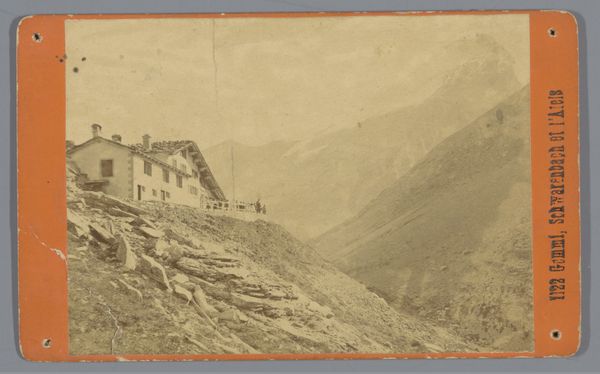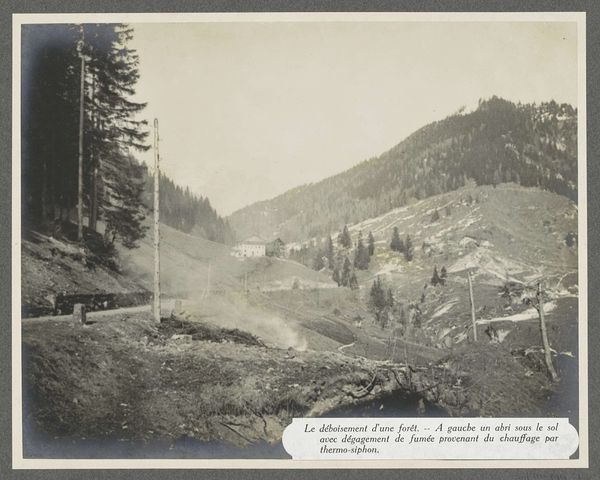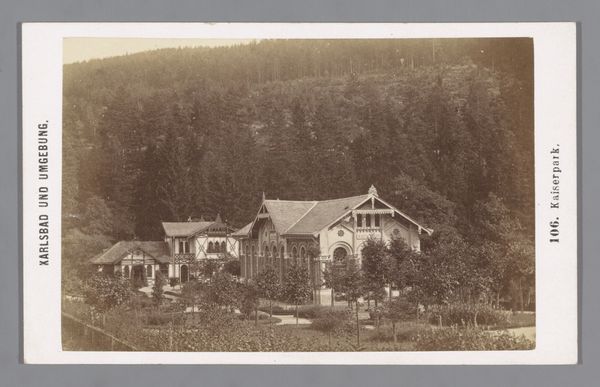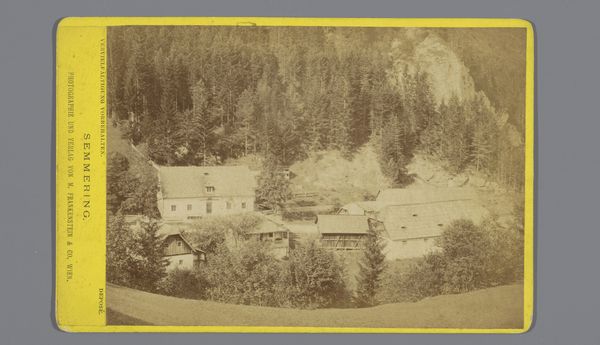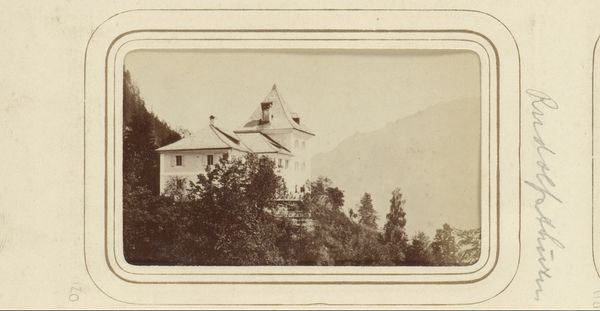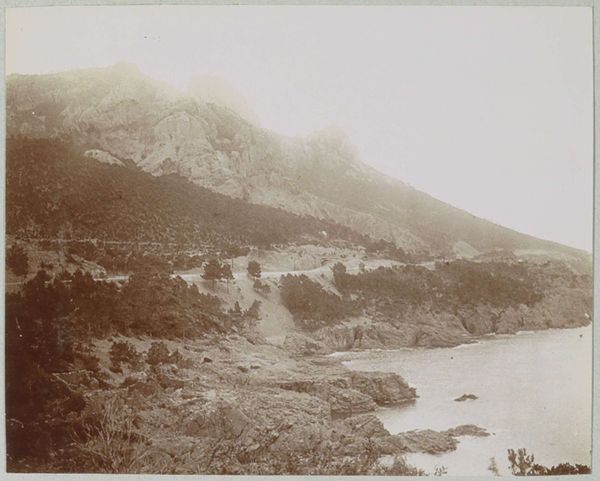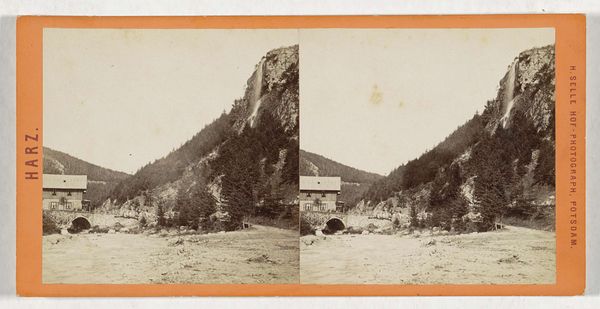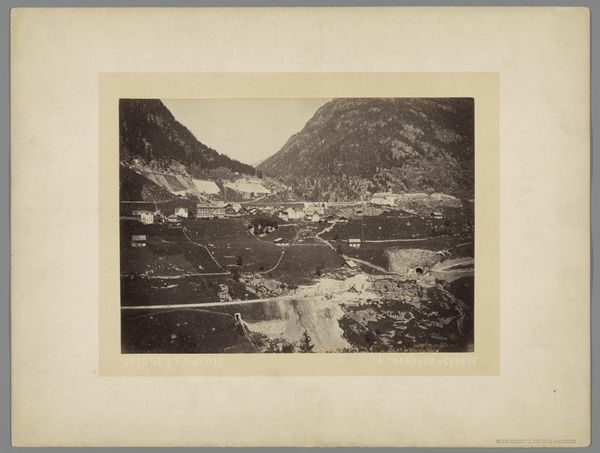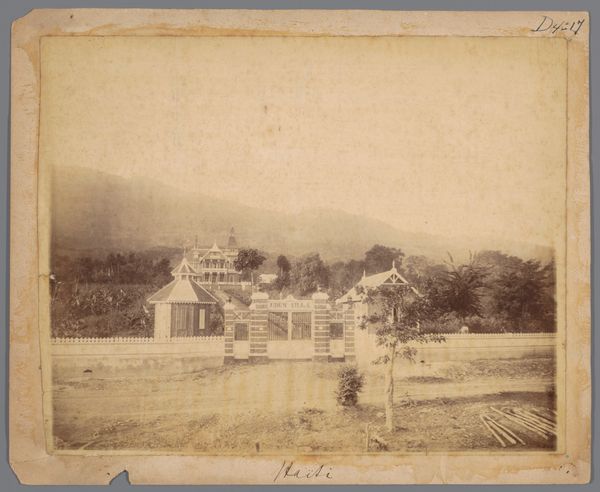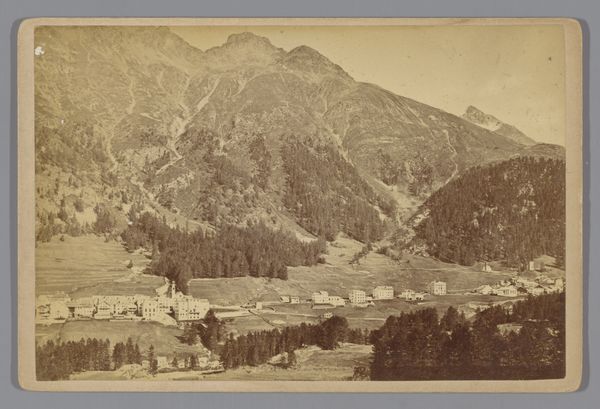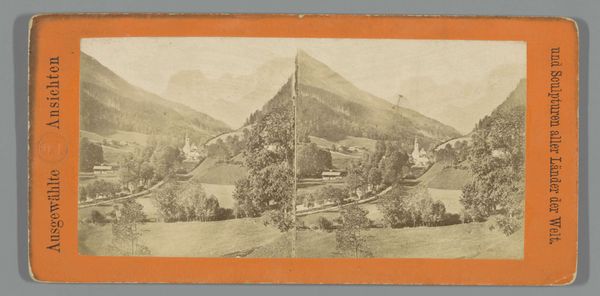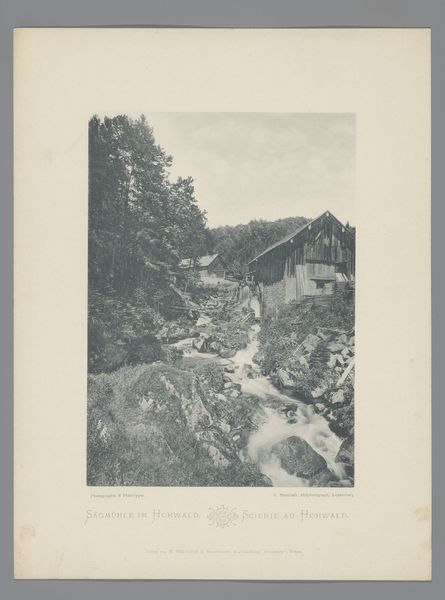
Dimensions: height 63 mm, width 104 mm
Copyright: Rijks Museum: Open Domain
Curator: Here we have "Gezicht op de Malojapas, Zwitserland," or "View of the Maloja Pass, Switzerland," created sometime between 1873 and 1883 by Florentin Charnaux. Editor: There’s a remarkable serenity to this scene. The way the chalet sits nestled in the landscape, almost as if it has organically sprung from it… there's a compelling stillness, a kind of pre-industrial tranquility. Curator: Indeed. Charnaux has masterfully captured this picturesque alpine setting using an albumen print, and perhaps augmented it with water colours and coloured pencil, blending photography with the sensibilities of pictorialism. Look at how the composition directs your gaze— the chalet at the centre serves as the anchor, stabilized by horizontal planes. Editor: I agree, the house commands the viewer's attention but it’s softened by the tones. The sepia feels timeless, and yet, the very act of photographing a 'picturesque' scene in that era becomes part of a larger story. Tourism was booming in Switzerland. What was Charnaux trying to sell, or tell, about Swiss identity or experience to audiences? Was he part of the project of nation-branding that happened then? Curator: An intriguing question. Visually, the light interacts with the textured foreground, full of stonecrop, guiding your eye further into the gentle background. It all adheres beautifully to traditional aesthetic frameworks for landscape art of that period, with a careful distribution of elements that create depth and a sense of space. Editor: What strikes me is the subtle manipulation of reality inherent in early landscape photography like this. Every element would have been carefully composed and even, to a degree, fabricated, especially since photographic equipment in that era had its limitations. Charnaux wasn’t merely recording reality. He was carefully crafting it, creating an idea of Switzerland for consumers to aspire to. This goes beyond aesthetics—it’s an exploration of identity and consumer culture intertwined with the idyllic allure of untouched landscapes. Curator: Precisely, a curated reality reflecting both artistic vision and technological possibilities, where composition, light and tonal range converge into a single image, and, of course, a statement on form. Editor: So in the end, Charnaux gives us an artwork not merely as visual pleasure but also as historical source to investigate culture and economy that shaped its making.
Comments
No comments
Be the first to comment and join the conversation on the ultimate creative platform.
